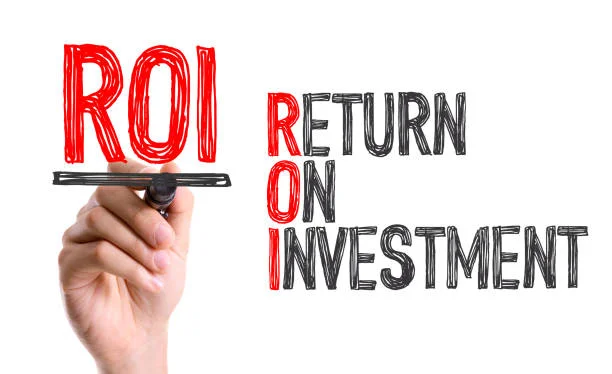Marketing Return on Investment (ROI) is an important tool that any company seeking growth should take seriously. It shows you whether your marketing dollars are genuinely paying off. But what if the metrics you are tracking don’t tell the full story? When comparing RCS vs SMS, the difference between digital engagement success and failure couldn’t be clearer – it’s literally between whether you’re just seeing basic text or an entire interactive experience. The same is true if you concentrate on simple, surface-level ROI metrics.
They end up chasing vanity metrics or misinterpreting their ROI data, and waste a lot of time and money. Real ROI measurement is not just sales today. It takes a bit more finesse and understanding around long-term value and customer behavior. In this article, I’ll dispel marketing ROI myths and discuss the content metrics that actually spur sustainable growth.
The Pitfalls of Focusing on the Wrong Metrics
It’s easy to fall into the trap of square peg, round hole and chase your strategy astray, but here are some misconceptions you should be aware of. Let’s dispel a few myths that could be costing you.
- Myth 1: ROI is everything. ROI is essential, but it doesn’t account for brand loyalty, customer referrals, or engagement, all said to be important factors in long-term success.
- Myth 2: Positive ROI = Successful campaign. Note that this is not always the case. If you were trying to enter a new market but only sold to your current customers, the campaign was a failure even if you had a positive ROI.
- Myth 3: ROI can be calculated with precision from day one. The impact of marketing erosion is cumulative. A campaign may bring modest initial sales but result in a wave of business months later as word-of-mouth spreads.
- Myth 4: You got a great ROI, therefore it must be the marketing’s fault. There are also outside influences, such as a competitor going out of business or a popular topic you can piggyback off of. Correlation isn’t always causation.
- Myth 5: You can set it and forget it with a reliable ROI. Markets change. What succeeded last quarter may not succeed next. Ongoing analysis and evolution are required for continued success.
Key Metrics to Maximize ROI
To actually gauge how your marketing is performing, you must move beyond the basics. Here are five key metrics that can help you get a truer picture of your marketing ROI.
- Customer Lifetime Value (CLV) Attribution: This involves more than retrieving a customer’s first purchase and instead measuring the total information value that a purchaser brings by the end of their lifetime relationship with your organization. A campaign-acquired customer could have a CLV well beyond their first purchase, resulting in a higher long-term ROI.
- ContentVelocity: Treat your content as an investment that will appreciate over time. One blog post, one video can be ripped out into ad creative, shared organically over the course of weeks, staying in your back pocket, driving traffic long after it’s actually published. Keeping track of this persistent value is essential for a correct ROI calculation.
- Brand Whoosh: This measure looks at how much better your marketing efforts have made the world think of this brand. Keep an eye on branded search volume, improved social media sentiment, and an increase in organic traffic to your site. This is a good sign of increasing brand loyalty.
- Inter-platform Amplification Rate: Your listeners are everywhere. Quantify how efforts in one channel, say TikTok, translate into growth on another, such as YouTube. This multiplied impact is the essence of effective content marketing. If it’s difficult for a local team of people to manage communications on their website and across platforms, problems like not being able to log in to Comporium webmail because your account is inactive may obstruct workflow and sluggish amplification plans.
- Retain Rate Resilience: How sticky are the customers you´re acquiring through marketing? A high retention from a channel means that the source of your customers is good, or in other words, you are attracting the right type of customers, the ones who venture further into your brand and they have more potential to make repeat purchases.
| Statistic | Value |
| Influencer marketing spend in 2025 | $32.55 billion |
| Brands maintaining or increasing influencer budgets in 2025 | 80% |
| Projected influencer ad spend by 2027 | $47.8 billion |
| Monthly content marketing expenses for many businesses | $5,000–$10,000 monthly |
| Pages and posts with zero organic traffic | 96+% |
| Posts generating actual leads | 1 in 10 |
Best Practices for Accurate ROI Measurement
And to make your math as close to perfect as it can be, consider these simple rules:
- Factor in all of the costs: This is anything from ad spend and software subscriptions to the time your team spends. Even small costs can quickly grow and have a significant influence on your eventual ROI.
- Think about the lifetime value of a customer: The value of one customer is worth more than one purchase. Taking into account the long-term spend also more accurately reflects your marketing success.
- Leverage tracking tools: Use instruments including unique promo codes, UTM parameters, and pixel tracking to correctly attribute sales and conversions across channels.
Charting a Smarter Path to ROI
The key is to concentrate on the optimal ROI metrics instead. Traditional calculations can provide a baseline for you to begin from. But a deeper understanding of metrics such as Customer Lifetime Value, Content Velocity, and Brand Affinity will give the insights necessary to make real data-driven decisions. You can take your marketing from being a playing-the-odds game to a predictable long-term success story by getting beyond the top-line numbers and thinking about it in broader terms.






